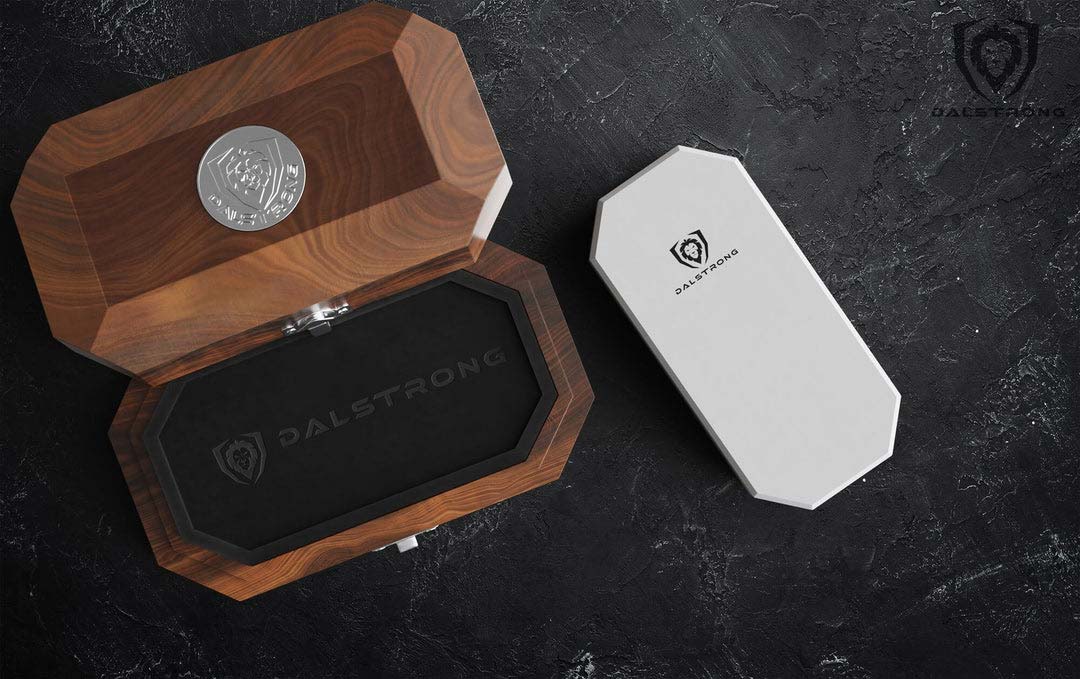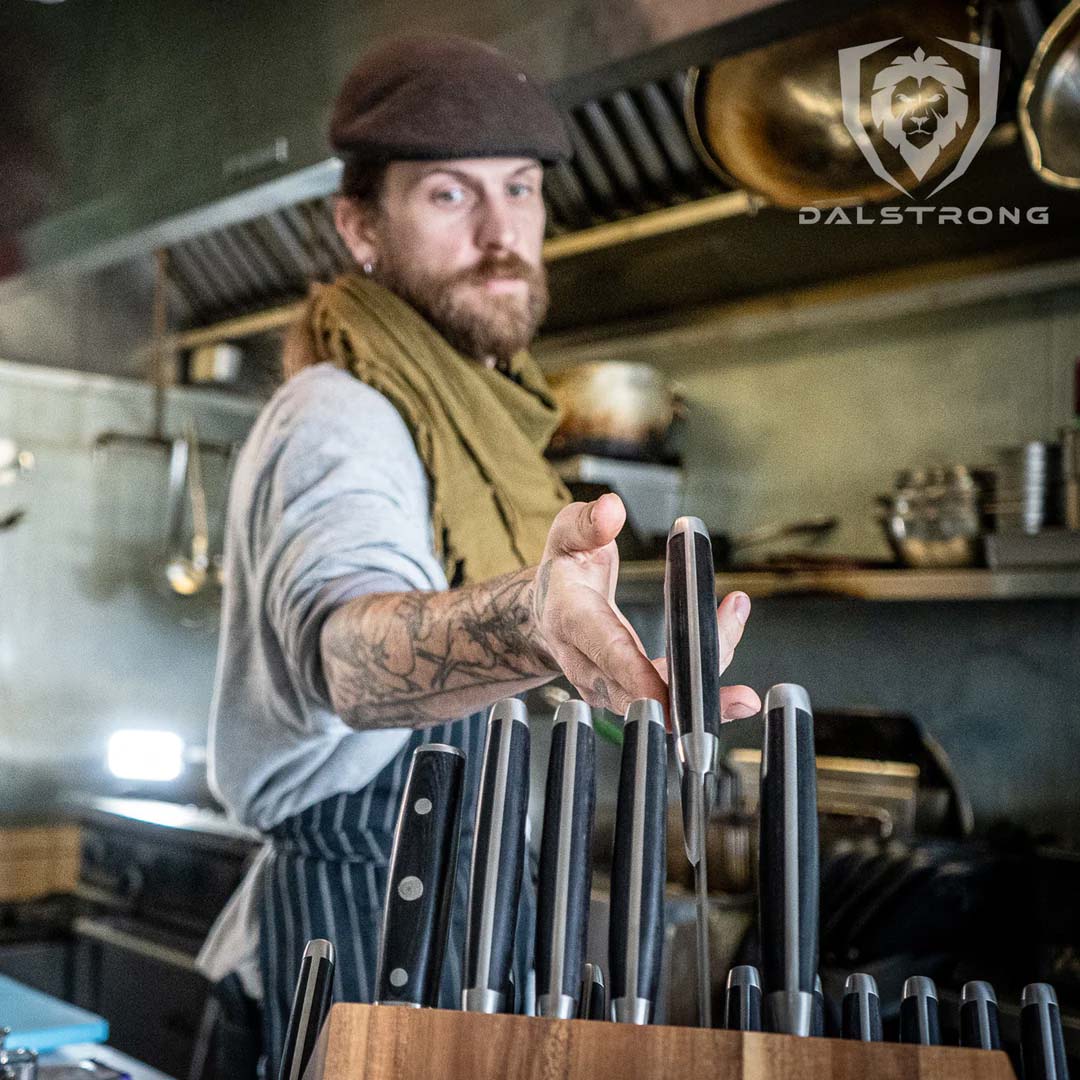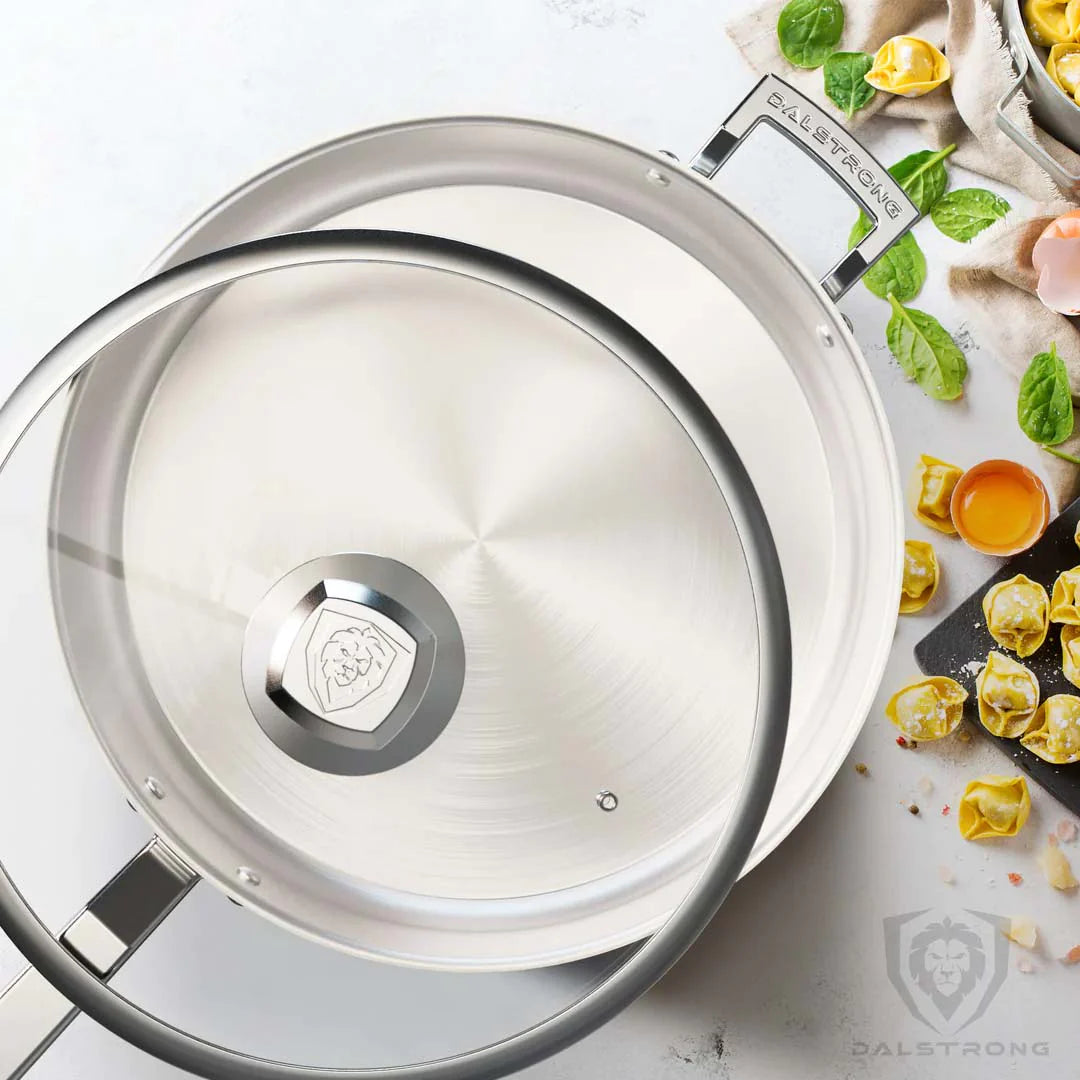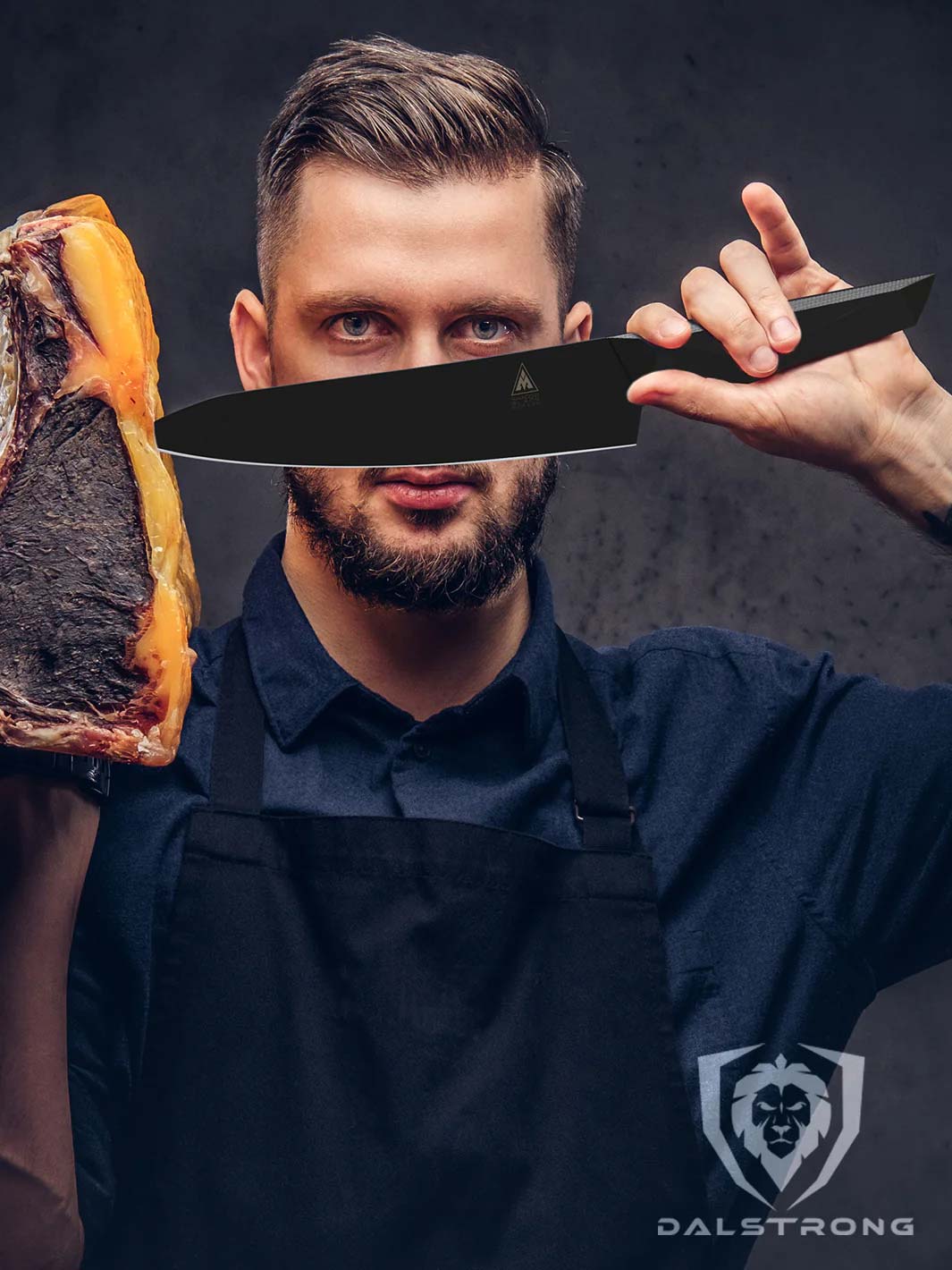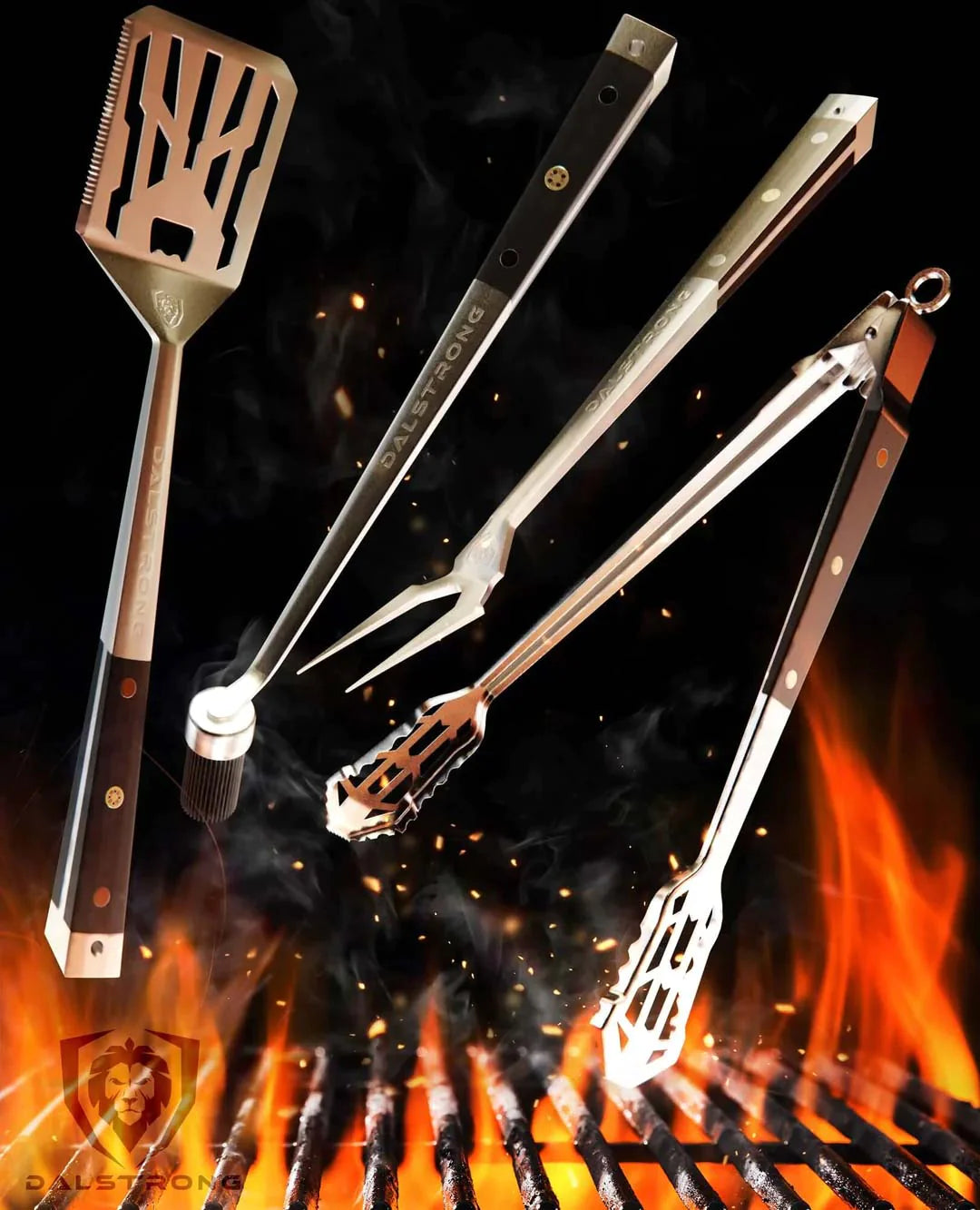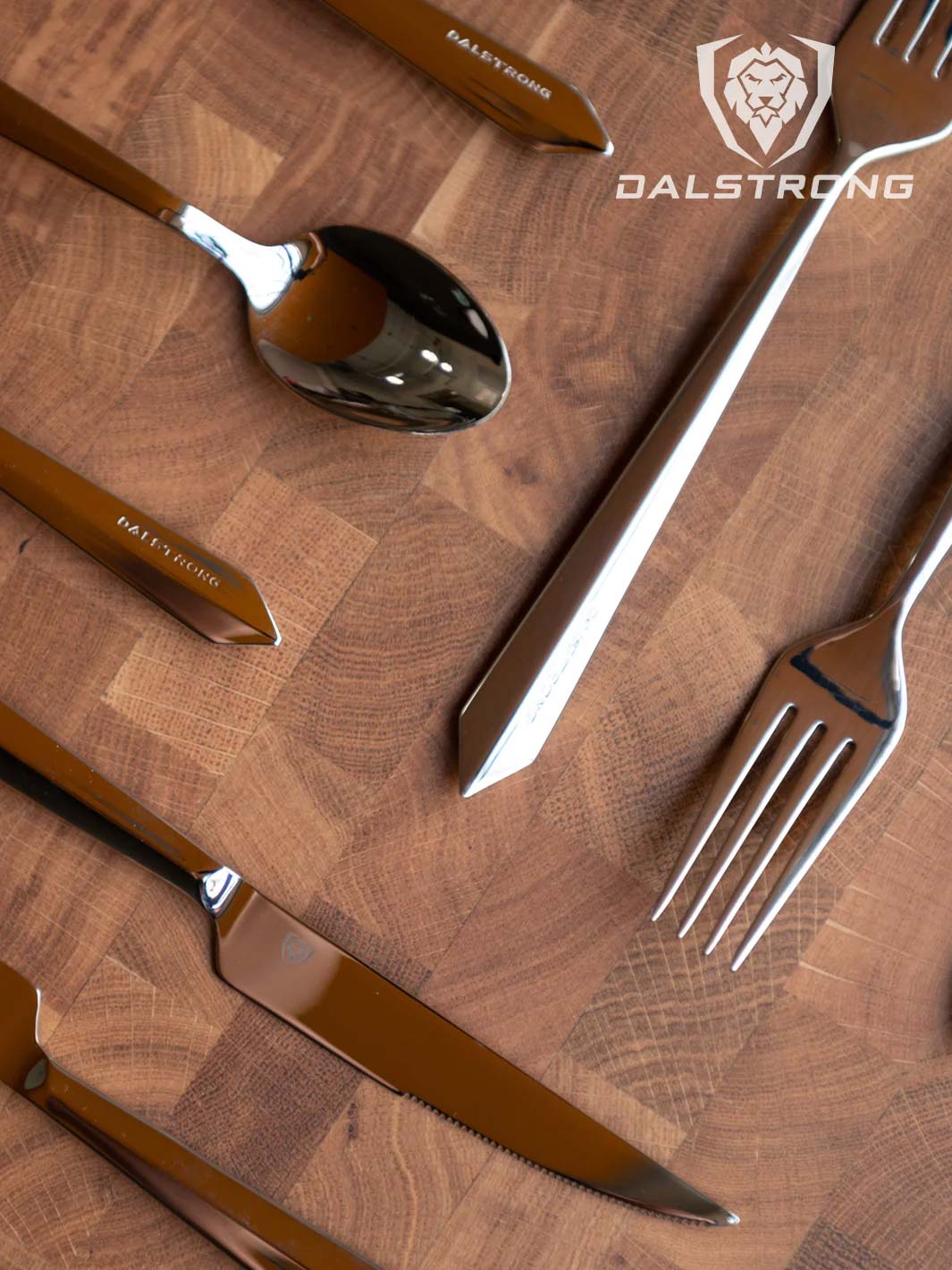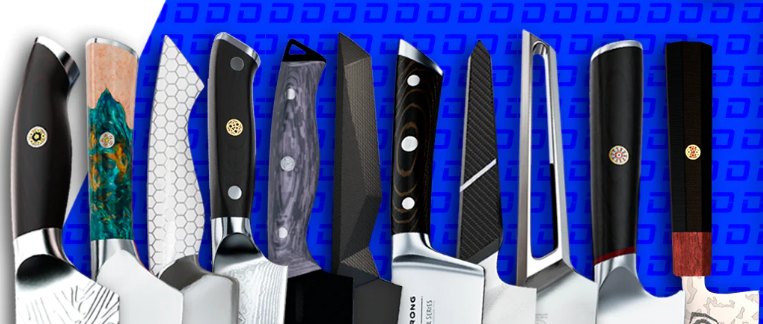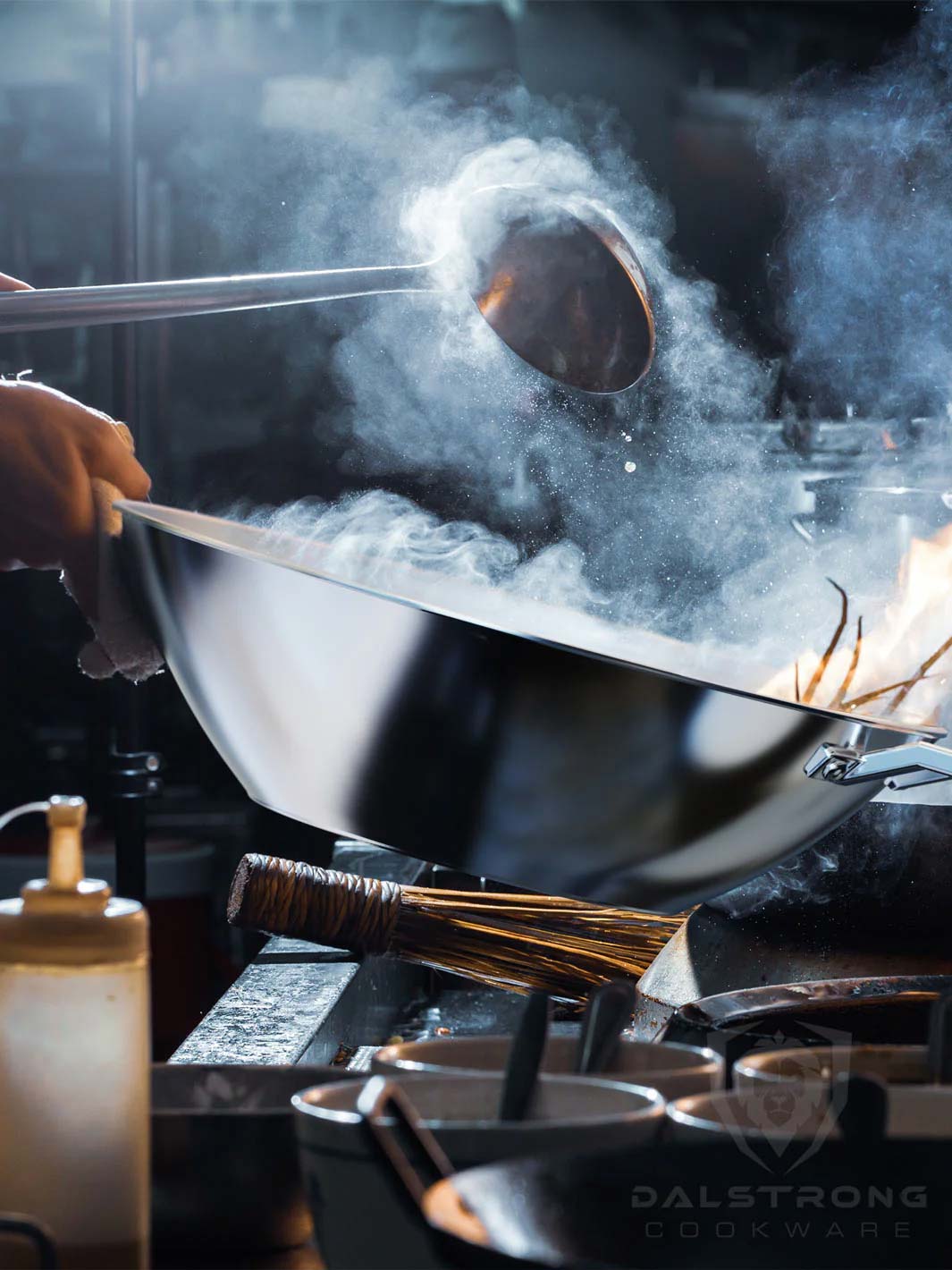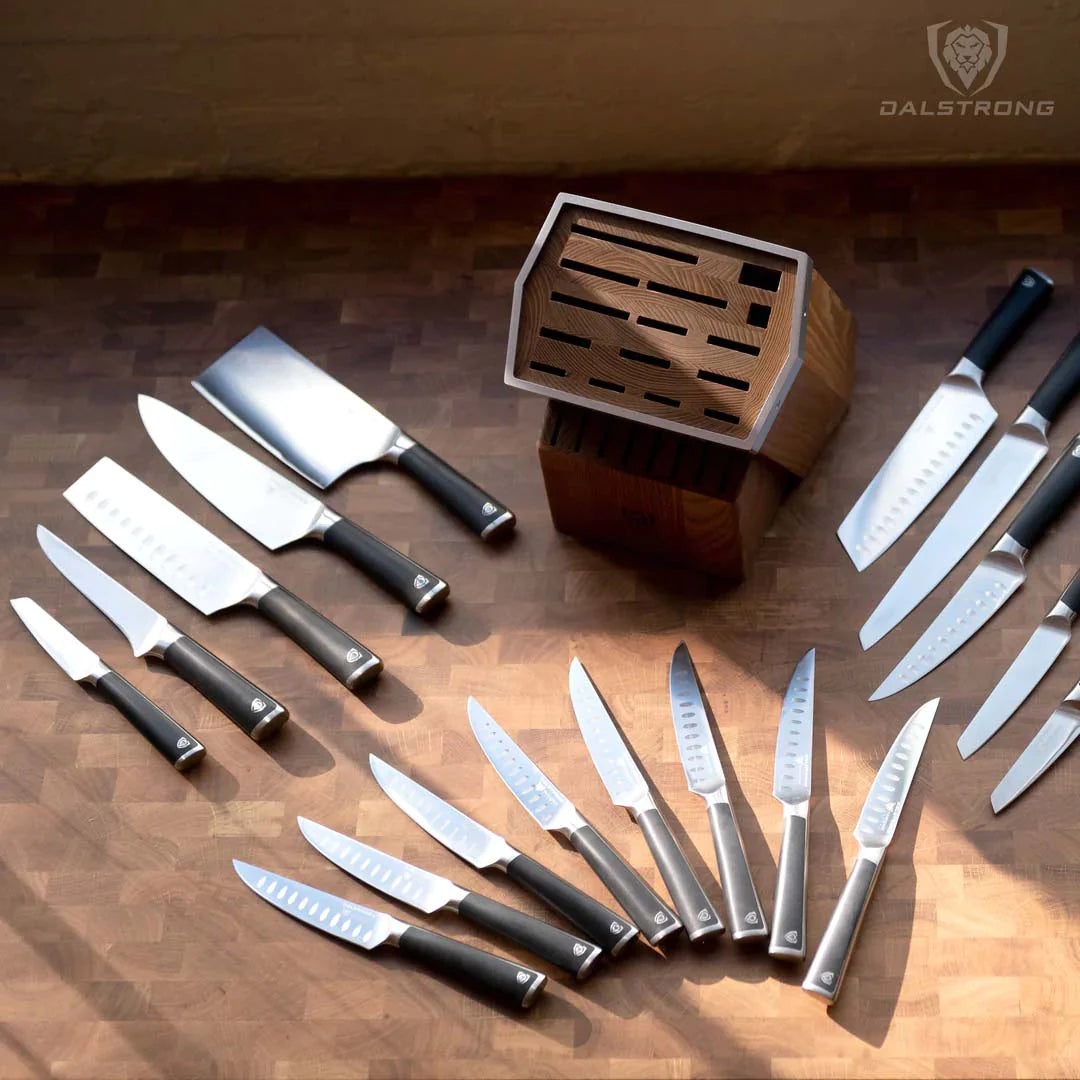Japanese Knife Sets - Everything You Need to Know
Shogun Series ELITE Santoku Knife 7"
Best Japanese Knife Sets for You:
- 3 Piece Paring Knife Set Shogun Series | Dalstrong
- 5 Piece Block Set Shogun Series X | Dalstrong
- 6 Piece Knife Set Dragon Spire Phantom Series | Dalstrong
A sharp set of knives is a must-have for both professional chefs and passionate home cooks. For many, a knife set is an investment. A high-quality set can last for a lifetime of preparing countless delicious meals. Over the years, Japanese knives have earned a stellar reputation for their sharpness, precision, and quality.
The best Japanese knife set includes a range of sharp and versatile knives for daily cooking tasks. Keep reading to learn more about the qualities of the best Japanese knife sets and explore some of the top picks on the market.
1. What is a Japanese knife?
6'' Nakiri Knife | Shogun Series X | Dalstrong
Knives are the backbone of a kitchen arsenal. If you are cooking anything at home, you must have a reliable blade to slice and dice ingredients. There are two styles to choose from; Western knives are predominantly made in Germany and France, or Japanese knives, which are made in, well, Japan.
Japanese kitchen knives, also known as Hōchō, have an incredible cult following of talented chefs and passionate cooks across the globe, and rightly so. Japanese kitchen knives are greatly influenced by the technological development of Japanese swords, which gives these knives an edge to stand out in the culinary world.
Widely known to be the most well-crafted kitchen tool in the world, Japanese knives are built to provide strength, beauty, and durability. While Western knives are known for their durability and heft, but Japanese knives are known for their razor-sharp edges, nimble precision, and lightweight handles.
What makes these knives so desirable is the fact that they are made with hard carbon steel and still have a light, thin and razor-sharp edge. This makes these knives the perfect tool for all your slicing, dicing, chopping, and cutting needs. Another reason why chefs prefer to keep a Japanese knife around is that they are easier to sharpen than German knives and provide better edge retention for a long period of time when looked after with care.
Japanese knives can be your best friend in the kitchen as you make sushi at home, chop through mounds of herbs and debone whole poultry. These knives hold their edge, feel comfortable in hands of any size, and provide balanced precise cuts.
Your kitchen may have a wide array of tools and equipment, from cookware to accessories like a sturdy cutting board and aprons. But, if you are looking to upgrade your kitchen knife set and equip your kitchen with the best of the best, a Japanese knife set is definitely worth your investment.
Every Japanese knife can range in price depending on the type of steel used and the methods adopted to craft and sharpen (check out the best knife knife sharpener here) it, and picking from a wide range of options can get overwhelming, especially if you’re just beginning to build your kitchen arsenal. But don’t worry- I’m here to walk you through the characteristics that set these knives apart from normal kitchen knives and get down to the nitty-gritty of finding a Japanese blade that works for your kitchen.
2. How to choose a Japanese Knife?
Gladiator Series Nakiri Knife 7"
I would like to think of cooking as an art and the knife is your primary tool. A lot of amateur home cooks and chefs around you will never experience the convenience and particular feel of a brilliant Japanese knife. But for those who are in the profession, first-rate knives become as important as the ingredients being used, and trust me, once you get used to one of these knives, there is absolutely no turning back.
Here are a few things that I like to keep in mind before I pick the correct Japanese knife for my kitchen:
Type of steel
For me, this is probably one of the most important elements to look for when picking a Japanese knife. You may not realize this now but the type of steel used can make or break a knife. Japanese knives are popularly known for their fine grain structure and hard carbon steel. What you need to keep in mind is that the greater the hardness, the finer the bevel angle, and the sharper the edge.
Japanese knives are made from high-carbon steel and stainless steel. Although a stainless steel blade is rust-resistant, easy to maintain, and provide excellent sharpness and edge retention, these blades require professional sharpening from time to time which can be a hassle.
High-carbon steel blades on the other hand beautifully blend the advantages of stainless steel and carbon steel to produce a more superior blade. Knives made with these blades are of premium quality that ensures maximum durability and ease of sharpening.
About Damascus Steel:
Another material widely used to make Japanese knives is Damascus steel. This Japanese steel is forged by hand and folded multiple times to create a blade that is both strong and durable. This steel is known to produce beautiful designs on the blade and can perform diverse functions like a true master.
This steel, in general consists of high carbon steels with tempering and hardening properties fused into one. Once the mixture is heated, a visibly crystalline structure is produced. The crystals form a water-like or wavy pattern when cooled down. It is this beauty and strength that puts Japanese knives in a different league altogether.
Knives made with Damascus steel produce strong and long-lasting blades that perform kitchen tasks like slicing, chopping, and dicing beautifully. This steel produces a mighty sharp blade, which is why a lot of care must be exercised when using this blade, especially for amateur chefs and new cooks.
Type of handle
The only way you can achieve clean, smooth, and precise cuts of meat is when you have a safe grip on your knife. When selecting a knife, always remember that the handle shouldn't be heavier or lighter than required and it should also have a shape that would fit well in your hands. An uncomfortable knife is bound to perform poorly even if it has the more premium quality blade attached to it, not to mention it could be dangerous.
There are several types of knife handles that you must learn about when choosing your ideal Japanese style knife. One is a European knife handle. These are heavier and sturdier which is why it is preferred when one has to perform tougher tasks. The other is a Japanese-style handle that is usually made of wood. This makes the knives lighted and more agile to work with.
Intent
“What am I actually going to use this knife for?” This one simple question can give you a lot of clarity when picking a knife. Determining the intended purpose to use the knife is very important because different blades have different uses.
For example, going for a versatile knife with a curved edge will allow cutting with a rocking motion if all you want to do with that knife is chop and slice veggies. On the other hand, you would pick a knife with a straight-edged blade that allows for push and pull strokes if you’re looking for a knife to cut meat or fish. If you are more prone to slicing tough bread or hard fruits, then a serrated bread knife or utility knife would be the go to.
Another thing to keep in mind here is the length of the blade. While a shorter blade works well when cutting small vegetables, you will need a longer blade to slice up a whole fish or large chunks of meat.
Single bevel or Double-bevel
Before we get to the details, let’s first understand what a bevel is. Simply put, it is a surface that has been ground to form the knife’s edge. If you look at the knife closely, you will see a slight angle on 1 or both sides that runs down the edge. That is the bevel.
With that being said, if that’s a noticeable angle on both sides, it is a double-bevel knife, and if there is an angle only on one side, it is single-beveled. You can find a Japanese knife in both styles.
Professional chefs largely prefer single-beveled knives for higher precision cutting jobs, however, they are now easy to handle or sharpen. If you are looking to buy a knife for your home kitchen and use it for your daily kitchen tasks, a double bevel is the way to go.
3. Japanese Knife VS German Knife
As mentioned earlier, the two most common options when it comes to kitchen knives are German and Japanese Knives. It is the great debate: which one is superior to the other?
However, you shouldn’t jump in and make a decision without knowing the facts.
The last thing you want to do is invest in a knife only for you to realize that it won’t perform the way you want it to. Let’s take a look at some of the key differences that will help you make an informed decision before investing in Japanese knives.
|
Key Differences |
||
|
Japanese Knife |
German Knife |
|
|
Origin |
Originated in Japan |
Originated in Germany |
|
Intent |
Japanese knives are more suitable for precise cutting or chopping jobs. They are designed with thinner blades and demand more attention during usage. |
German knives can handle tough jobs with ease; you can use them on joints and bones. |
|
Blade Angle |
The blades on Japanese knives generally have anywhere between 10 to 15 degrees on each side. |
German knives are generally designed with a wider blade angle; in most of these kitchen knife sets, you may find an angle of 17.5 degrees. |
|
Design |
Japanese knives more often than not, have no bolster and the tangs vary between knife makers. This makes the knife much lighter and versatile to use. |
German knives usually come with a full-tang and a bolster. |
|
Steel |
Japanese steel blades contain much more carbon than German blades due to a difference in forging techniques This makes them harder, but also more fragile. |
The steel used to make German knives is relatively softer, it’s capable of holding an edge longer and doesn’t need to be sharpened quite as often as Japanese blades do. |
|
Hardness |
Japanese knives score somewhere between 60 to 63 on the Rockwell scale. A Rockwell hardness over 58 will provide the sharpest edge retention but requires greater care as they can chip and break if dropped or misused. |
German knives score 57 on the Rockwell scale. Knives with a lower Rockwell score are less likely to chip and break, can handle more abuse but will require honing and sharpening on a more regular basis. |
|
Construction |
Japanese blades taper inside the handle, making for a lighter, front-weighted knife to enable more controlled movements. |
Most German knives have a full-tang construction, which means that a single piece of steel runs from blade to butt. |
|
Weight |
Lighter to hold |
Heavier to hold |
4. Different Types of Japanese Knives
Gladiator Series Nakiri Knife 7"
When it comes to the art of making knives, Japanese knifemakers tend to focus their attention on specialization and task-specific designs. These knives are the cream of the crop in the culinary world and have a wide range of blades under them.
Here is a list of some of the most important Japanese kitchen knife styles you need to know:
Nakiri Knife:
No matter what vegetable you need to cut, a Nakiri knife will do the job with great precision.
The Nakiri is a classic Japanese-style knife that has a straight, symmetrical edge and is most commonly used for slicing, dicing, and chopping vegetables. The large rectangular blade of these knives may look like a cleaver but are definitely not the same.
Unlike a standard chefs knife that works in a rocking motion, the Nakiri is ideal for up-and-down motions. While the knives are too thin to cut through animal bone, they work perfectly for chopping, slicing, and dicing vegetables like celery stalks, carrots, onions, leeks, zucchini, eggplant, and others.
Nakiri knives are traditionally forged in high carbon stainless steel and have a length that is similar to a Santoku knife. The only difference is that it has a totally straight-edged blade that is ideal for all your vegetable needs. This classic knife also lends excellent blade retention, boosting the knife’s durability and reducing sharpening time.
I recommend you pick a Nakiri for your kitchen that comes with an ergonomic handle. This will proved extra comfort while cutting and mincing. So if you’re someone who loves a side of greens with every meal or are a vegetarian with a passion for cooking, a good-old Nakiri is what your kitchen needs.
Santoku Knife:
The most common style of Japanese knives, a Santoku knife is a multipurpose chef’s knife.
They are not only the most common style of Japanese knives but are also the most versatile. These Japanese-style blades can be used effortlessly when working with veggies and carving meat. In fact, the knife gets its name from the term “Santoku” which means ”three virtues”- in this case, slicing, dicing, and chopping.
These knives are lighter and narrow than a chef’s knife and what sets this knife apart is the blade which is shorter in length (about 5-7 inches) and has a straighter edge. The sharp edges of the blades of these knives ensure accurate and precise cuts of meats. Additionally, these knives are lighter than the traditional ones, making them less tiring on your wrists even after prolonged usage.
Kiritsuke Knife:
A true symbol of status, experience, and expertise, a Kiritsuke knife is mainly used by head chefs or cooks with extensive kitchen experience.
Though they are less familiar to some home chefs, they have certain uses they work best for. This Japanese knife is popularly used for thinly slicing fish, vegetables, and fruits and uses the push-and-pull cutting technique.
Because this knife is slightly tricky to use, it is mainly used by executive chefs and is flaunted as a symbol of status in the kitchen. A Kiritsuke knife is a fusion of the Yanagiba blade that is ideally used for slicing raw fish extremely thin for sushi and an Usuba, a blade used to cut vegetables into thin slices.
Other than slicing fish, this knife can also be well used for cutting herbs, slicing meats, and dicing vegetables. This knife is typically reserved for head chefs but if you really want to use one in your home kitchen, you need to know the proper technique and need lots of practice. After a while, you will see that the knife slowly gets more comfortable to use.
Yanagiba Knife:
Not to be confused with the deba knife and also called the Yanagi knife, Yanagiba knives are traditionally used for slicing sushi or sashimi.
The ultra-sharp blade sails through fibers in the flesh preserving its integrity and texture and the long, narrow blade ensures paper-thin slices of fish and other meats.
This knife is the perfect example of a single bevel knife (a knife that is only sharpened on one side). In each Yanagiba knife, you will have a very definable bevel grind line that goes from the handle to the spine, just below the tip, called Shinogi. The back side of the knife is slightly concave, called Urasuki.
The idea behind this unique design boils down to 2 main reasons: performance and food release. Because the knife is only ground on one side, cutting into very hard food with a Yanagiba will not get you the best results. However, slicing a big, juicy, delicious slab of fish with this knife is totally different experience.
The extremely thin and sharp edge of the blade will bite into the flesh with great ease. As you continue to slice through the fish, you might feel the blade pull to the left so make sure you’re always slicing at a bit of an angle.
The concavity of the blade will naturally release the slice of fish and you won’t be generating any extra friction between the meat and the knife. This way, your gorgeous slice of meat will be under less stress and will be less likely to get torn or mangled up.
5. Build Your Own Japanese Knife Set
Whether you are a hobbyist gourmand who likes trying their hand at different recipes or a professional chef, a knife set is something that you will eventually have to build. The best knife collection is usually one that you have amassed yourself, through experience, discovery, familiarity, and some trial-and-error.
It is much better to do it in this organic fashion than merely purchasing a pre-assembled set. Here is a list of my preferred Japanese knives to help you make a choice that gives you a bang for your buck:
Japanese Chef’s Knife
Kiritsuke Chef's Knife 8.5" Shogun Series | Dalstrong
This Japanese version of the multi-purpose chef’s knife is a push-cut master. With its’ long straight edge and sword-shaped tip, this blade is a complete beauty. This blade fuses the design of both traditional Japanese Yanagiba (fish slicers) and Usubas (vegetable knives). Along with striking angles and life-long durability, The Shogun Series version is double-beveled, making it both easier to use and maintain.This knife comes with a carefully engineered ergonomic handle is designed for superior hand control and comfort. Each knife comes with unforgettable styling, sophistication, and functionality, making heads turn in any kitchen
Pros:
- Precision-forged, ultra-sharp, wear-resistant blade made with a single piece of high carbon German ThyssenKrupp Steel at 62+ Rockwell.
- Tapered design for hardness and flexibly.
- Multi-use chef’s knife used for chopping, slicing, and dicing vegetables and cutting through fish.
- Skill is required in using and maintaining single bevel knives so if you’re new to the kitchen, this might not be the ideal choice.
- If you are looking for something for more delicate tasks like peeling and deveining, you might want to go for another Japanese knife.
Japanese Paring Knife
Paring Knife 3.5" Shogun Series | Dalstrong
Say hello to the precision specialist. Also known as a petty knife, this paring knife features a small, narrow blade that tapers to a point. It is as essential to any serious chef or cook as the chef’s knife, and nearly as versatile.
Made from a single piece of ultra-premium Japanese high-carbon AUS-10V steel with 66-alternating layers of Damascus cladding for stain resistance and durability this knife is built for strength, flexibility, and hardness.
The super-steel core possesses extra high carbon levels, allowing for scalpel-like sharpness with exceptionally long-lasting edge retention. Additionally, the blade is highly impervious to both heat and moisture with life-long durability. The carefully engineered ergonomic handle is designed for superior hand control and comfort, while simultaneously being stabilized with an engraved end-cap for agile performance.
Pros:
- Paring knives (also called peeling knives) are very versatile, and a mainstay of the professional kitchen as a result.
- Many cooks use them to peel or cut fruit and vegetables into small pieces or to carry out other similar precision work.
- The triple-riveted knife provides more resilience and comes with a full tang for superb robustness and quality.
- When working with larger chunks of meat, you would want to pick up one of the other Japanese knives.
- These knives are slightly more difficult to use and sharpen.
Japanese Vegetable Knife (Nakiri Knife)
Nakiri Vegetable Knife 6" Phantom Series | Dalstrong
This vegetable-cutting master blade can easily handle all types of vegetables. Combining elements of a chef’s knife with that of a vegetable cleaver, the square tip and flat profile of this blade make it a push cut champion, while the blade's extra width assists with food transfer.
This knife is perfect for home cooks, vegetarians or vegans, and those who find themselves preparing large amounts of fruits and veggies regularly. The ‘Liquid Metal’ pattern on this blade is designed specifically to reduce drag and increase efficiency by allowing you to glide through prep.
It also some with premium quality laminated pakkawood handles that provide the knife with superior strength, refinement, and beauty.
Pros:
- Scalpel-like blade sharpness at a staggering 13-15° angle per side.
- It provides incredible edge-retention, increasing the knife’s durability.
- The ice-tempered blade ensures excellent resilience and amazing edge retention.
- The knife is relatively low maintenance and cleans easily.
Cons:
- The knife is priced on a slightly higher side.
- This knife only works well with fruits and vegetables. To work with meat, you would want to opt for one of Dalstrong’s other knives.
6. Frequently Asked Questions About Japanese Knife Sets
3 Piece Paring Knife Set | Shogun Series | Dalstrong ©
How do you know if a Japanese knife is good?
When picking a Japanese knife look for high-quality, high cutting performance, durability, ease of maintenance, and ease of re-sharpening. All of these are important factors to consider when choosing your first Japanese knife.
What should I look for in a Japanese knife?
Traditional Japanese knives are characterized by its single-bevel blade, a sharpened edge on one side of the blade surface and the other side completely straight. This edge makes it ideal for precise slicing motions.
What can you not cut with a Japanese knife?
Japanese knives are easier to chip than thicker European knives so think before you chop. Don't cut directly on hard surfaces such as a benchtop; stainless steel sink; plate or chopping boards made from glass, ceramic, bamboo, corian and other hard substances.
How do you sharpen a Japanese knife?
The best way to sharpen a Japanese knife is using a sharpening whetstone.
Click here to know more about sharpening your blades with ease at home.
What is a Santoku used for?
Santoku translates to 'three uses', and are ideal for mincing, dicing and slicing, as they feature a straight edge with a narrow sheep's foot blade. These knives have evolved from the traditional Japanese vegetable knife which has a rectangular blade.
Check Out Dalstrong Japanese Knives Today
(Pictured below is the Dalstrong Shogun Series steak knife set)
Written by Himani Vaid
Toronto-based food nerd turned food storyteller, Himani is a connoisseur of all things delish. Currently, busy thinking about what to eat next.


















































































































































































































